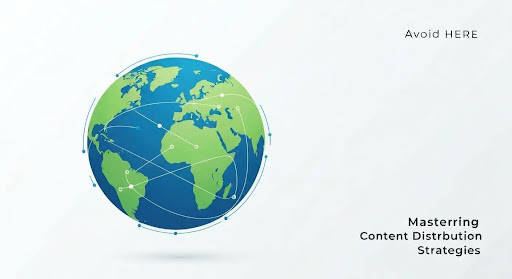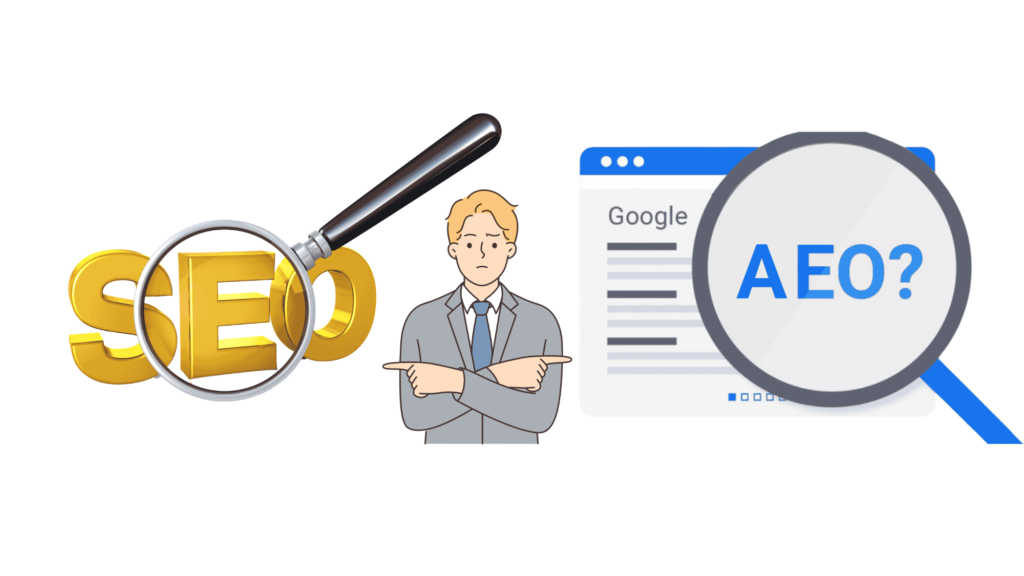
Digital Marketing Trends 2025: What Every Business Owner Should Know
The digital marketing landscape continues to evolve at breakneck speed. As we move through 2025, new technologies, changing consumer behaviors, and emerging platforms are reshaping how businesses connect with their audiences. Here are the key trends every business owner should understand and implement.
1. AI-Powered Personalization at Scale
The Evolution of Customer Experience
Artificial Intelligence has moved beyond basic chatbots to deliver truly personalized experiences across every touchpoint. Modern AI systems can analyze vast amounts of customer data to create individualized journeys that feel natural and engaging.
Key AI Applications:
- Dynamic content personalization based on user behavior
- Predictive product recommendations that increase sales
- Automated email sequences triggered by micro-interactions
- Real-time website optimization for individual visitors
Implementation Strategies
Start with Data Collection:
- Implement comprehensive tracking across all touchpoints
- Use customer data platforms (CDPs) to unify data sources
- Create detailed customer personas based on actual behavior
- Set up proper data governance and privacy compliance
AI Tools for Small Businesses:
- HubSpot: AI-powered marketing automation
- Mailchimp: Predictive analytics and recommendations
- Klaviyo: Advanced segmentation and personalization
- Dynamic Yield: Real-time personalization platform
Measuring Personalization Success
Key Metrics to Track:
- Conversion rate improvements by segment
- Customer lifetime value increases
- Email engagement rate improvements
- Time spent on personalized content
- Return visitor conversion rates
2. Voice Search and Conversational Commerce
The Rise of Voice-First Interactions
With over 50% of adults using voice search daily, optimizing for voice queries has become essential. Voice searches tend to be longer, more conversational, and often have local intent.
Voice Search Optimization Strategies:
- Natural language content that mirrors how people speak
- FAQ-style content that answers common questions
- Local SEO optimization for "near me" searches
- Featured snippet optimization for voice results
Conversational Commerce Growth
Chatbot Evolution:
- AI-powered conversations that feel natural
- Integration with e-commerce platforms
- Multi-language support for global businesses
- Emotional intelligence in customer interactions
Implementation Best Practices:
- Design conversation flows that mirror human interactions
- Provide clear escalation paths to human agents
- Use rich media (images, videos, carousels) in chat
- Implement sentiment analysis for better responses
Voice Commerce Opportunities
Emerging Platforms:
- Amazon Alexa Skills for brand interaction
- Google Assistant Actions for service discovery
- Smart speaker advertising for brand awareness
- Voice-activated reordering for repeat purchases
3. Video-First Content Strategy
Short-Form Video Dominance
Short-form video content continues to drive engagement across all platforms. The average attention span has decreased to 8 seconds, making concise, impactful video content essential.
Platform-Specific Strategies:
TikTok for Business:
- Authentic, behind-the-scenes content
- User-generated content campaigns
- Influencer partnerships for reach
- Educational content in trending formats
Instagram Reels:
- Product demonstrations and tutorials
- Customer testimonials and reviews
- Brand storytelling in vertical format
- Interactive content with polls and questions
YouTube Shorts:
- Quick tips and how-to content
- Product unboxings and reviews
- Company culture and team content
- Industry insights and trends
Live Streaming for Authentic Connection
Live Commerce Growth:
- Real-time product demonstrations
- Q&A sessions with experts
- Behind-the-scenes company events
- Interactive shopping experiences
Best Practices for Live Content:
- Consistent scheduling builds audience expectation
- Interactive elements increase engagement
- Professional lighting and audio improve quality
- Cross-platform promotion maximizes reach
4. Privacy-First Marketing Approaches
The Post-Cookie Era
With third-party cookies being phased out, marketers must adapt to new ways of reaching and understanding their audience while respecting privacy preferences.
First-Party Data Strategies:
- Email marketing with valuable content offers
- Loyalty programs that reward data sharing
- Progressive profiling that gradually collects information
- Community building around shared interests
Consent-Based Marketing
Transparency in Data Collection:
- Clear privacy policies in plain language
- Granular consent options for users
- Easy opt-out mechanisms
- Regular data audit and cleanup
Value Exchange Models:
- Offer genuine value in exchange for data
- Provide customization options users control
- Create exclusive content for opted-in users
- Build trust through consistent communication
Zero-Party Data Collection
Interactive Content for Data Collection:
- Quizzes and assessments that provide personalized results
- Polls and surveys with immediate feedback
- Preference centers for customization
- Interactive calculators for industry-specific needs
5. Omnichannel Customer Journey Optimization
Seamless Cross-Platform Experiences
Modern customers interact with brands across multiple touchpoints before making a purchase. Creating a cohesive experience across all channels is crucial for conversion and retention.
Channel Integration Strategies:
- Unified customer profiles across all platforms
- Consistent messaging and brand voice
- Cross-channel attribution modeling
- Synchronized inventory and pricing
Advanced Customer Journey Mapping
Touchpoint Analysis:
- Identify all customer interaction points
- Map emotional states at each stage
- Optimize high-impact moments
- Remove friction from the journey
Journey Optimization Tools:
- Google Analytics 4 for cross-platform tracking
- Adobe Customer Journey Analytics for enterprise
- Mixpanel for product-led businesses
- Amplitude for behavioral analysis
6. Sustainable and Purpose-Driven Marketing
Consumer Values Alignment
Modern consumers, especially Gen Z and Millennials, expect brands to take stands on social and environmental issues. Authentic purpose-driven marketing builds stronger emotional connections.
Sustainable Marketing Practices:
- Carbon-neutral campaigns and operations
- Ethical supply chain transparency
- Social impact measurement and reporting
- Community investment and local support
Authentic Brand Storytelling
Purpose-Driven Content:
- Share genuine company values and missions
- Highlight employee stories and perspectives
- Document social impact initiatives
- Create content that educates and inspires
Avoiding "Greenwashing":
- Back claims with verifiable data
- Be transparent about shortcomings
- Show progress over perfection
- Engage with critics constructively
7. Interactive and Immersive Experiences
Augmented Reality (AR) Marketing
AR technology has become more accessible, allowing businesses to create engaging experiences that bridge physical and digital worlds.
AR Applications for Marketing:
- Virtual try-ons for fashion and beauty
- Product visualization in customer spaces
- Interactive packaging with digital overlays
- Location-based AR experiences
AR Implementation Tools:
- Snapchat Lens Studio for social AR
- Facebook Spark AR for Instagram integration
- 8th Wall for web-based AR
- ARCore/ARKit for mobile apps
Gamification Strategies
Engagement Through Play:
- Loyalty program gamification with points and levels
- Interactive challenges and competitions
- Achievement badges for customer actions
- Social sharing of game progress
Successful Gamification Elements:
- Clear rules and objectives
- Immediate feedback and rewards
- Progressive difficulty levels
- Social comparison and collaboration
8. Influencer Marketing Evolution
Micro and Nano-Influencer Focus
Brands are shifting from celebrity endorsements to authentic voices with smaller, more engaged audiences.
Influencer Tier Strategy:
- Nano-influencers (1K-10K followers): High engagement, low cost
- Micro-influencers (10K-100K): Niche expertise, authentic connections
- Macro-influencers (100K-1M): Broader reach, professional content
- Celebrity influencers (1M+): Mass awareness, high impact
Long-Term Partnership Models
Ambassador Programs:
- Ongoing relationships with brand advocates
- Exclusive access to new products
- Co-creation of content and campaigns
- Revenue sharing and commission structures
Performance Metrics Evolution:
- Move beyond follower count to engagement quality
- Track brand sentiment and awareness
- Measure conversion attribution
- Monitor long-term customer value
9. Advanced Marketing Automation
Hyper-Personalized Customer Journeys
Marketing automation has evolved from simple email sequences to complex, multi-channel orchestrations that respond to real-time customer behavior.
Advanced Automation Capabilities:
- Behavioral triggers across all touchpoints
- Cross-channel messaging coordination
- Predictive send-time optimization
- Dynamic content adaptation
Automation Platforms for 2025:
- HubSpot: All-in-one marketing automation
- Marketo: Enterprise-level sophistication
- Pardot: B2B focused automation
- Klaviyo: E-commerce specialization
AI-Driven Campaign Optimization
Machine Learning Applications:
- Automatic A/B testing and optimization
- Predictive audience segmentation
- Dynamic pricing and offer optimization
- Churn prediction and prevention
10. Data-Driven Creative Optimization
Creative Testing at Scale
Advanced testing methodologies allow marketers to optimize creative elements with statistical significance across large audiences.
Creative Testing Strategies:
- Multivariate testing of ad elements
- Dynamic creative optimization (DCO)
- Sequential creative messaging
- Cross-platform creative consistency
Testing Tools and Platforms:
- Facebook Creative Hub for ad testing
- Google Optimize for website experiments
- Optimizely for advanced testing
- VWO for conversion optimization
Performance Creative Development
Data-Informed Design Process:
- Use performance data to guide creative decisions
- Create modular assets for easy testing
- Develop creative frameworks for scalability
- Build creative libraries for consistent branding
Implementation Roadmap for 2025
Quarter 1: Foundation Building
- Audit current marketing technology stack
- Implement comprehensive tracking and analytics
- Develop first-party data collection strategies
- Begin AI tool evaluation and testing
Quarter 2: Content and Channel Expansion
- Launch video-first content strategy
- Optimize for voice search and conversational queries
- Implement advanced personalization tactics
- Expand omnichannel integration
Quarter 3: Advanced Technology Integration
- Deploy marketing automation workflows
- Launch AR/VR experiences
- Implement advanced customer journey mapping
- Begin influencer partnership programs
Quarter 4: Optimization and Scaling
- Analyze performance across all initiatives
- Scale successful programs
- Plan for emerging technologies
- Prepare 2026 marketing strategy
Measuring Success in the New Marketing Landscape
Key Performance Indicators (KPIs) for 2025
Customer-Centric Metrics:
- Customer Lifetime Value (CLV)
- Net Promoter Score (NPS)
- Customer Acquisition Cost (CAC)
- Retention and churn rates
Engagement Quality Metrics:
- Time spent with content
- Interaction depth and frequency
- Brand mention sentiment
- Community growth and engagement
Business Impact Metrics:
- Revenue attribution by channel
- Marketing qualified leads (MQLs)
- Sales cycle acceleration
- Market share growth
Advanced Analytics and Attribution
Multi-Touch Attribution Models:
- Understand the complete customer journey
- Allocate budget based on true channel impact
- Optimize touchpoint sequences
- Identify high-value interaction patterns
Conclusion: Preparing for the Future of Marketing
The digital marketing landscape of 2025 is characterized by increased personalization, privacy-conscious strategies, and immersive experiences. Success requires a balance of cutting-edge technology adoption and authentic human connection.
Key Takeaways for Business Owners
- Start with customer value: Technology should enhance, not replace, genuine value creation
- Invest in first-party data: Build direct relationships with your audience
- Embrace testing and optimization: Use data to guide creative and strategic decisions
- Focus on authentic storytelling: Purpose-driven marketing builds stronger connections
- Prepare for privacy-first future: Respect customer preferences while delivering value
Getting Started
- Assess your current capabilities against these trends
- Prioritize initiatives based on your audience and business goals
- Start small with pilot programs before full-scale implementation
- Invest in team training and technology infrastructure
- Monitor results and iterate based on performance
The businesses that thrive in 2025 and beyond will be those that can adapt quickly to changing consumer expectations while maintaining authentic connections with their audiences. The trends outlined here provide a roadmap for that success—the key is to start implementing them today.
📧 Stay Updated
Get the latest web development tips and insights delivered to your inbox.



